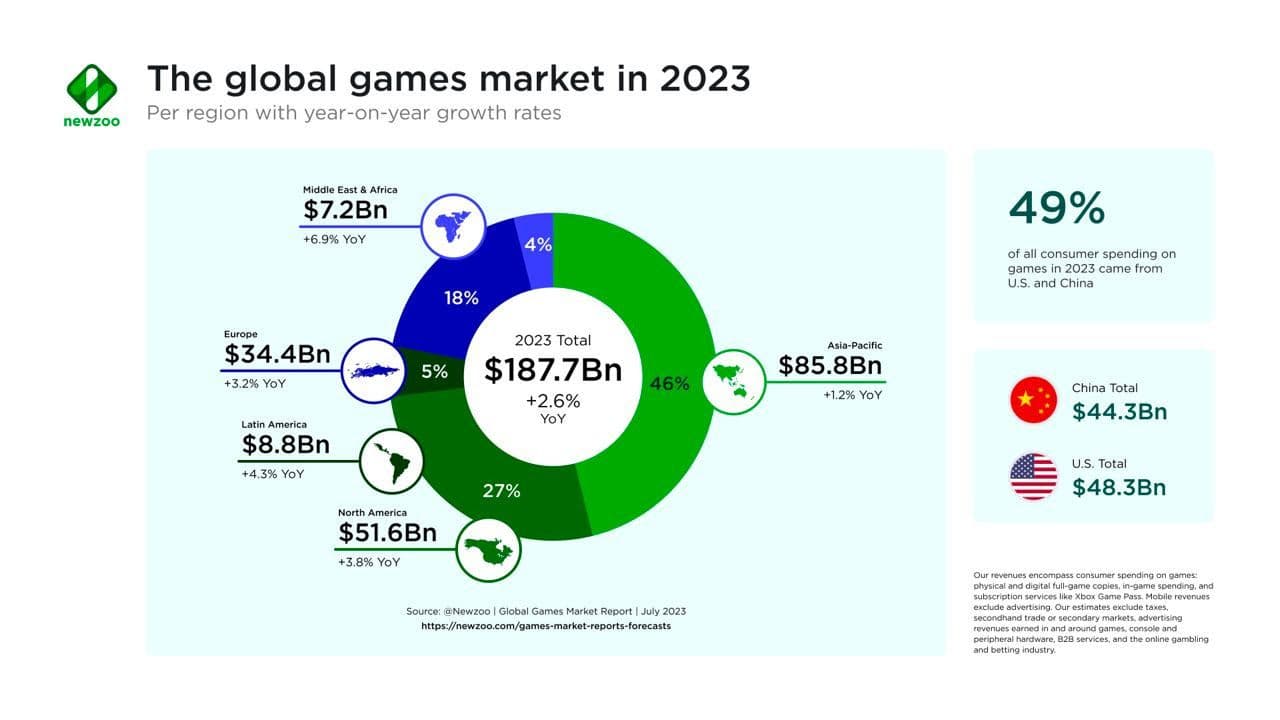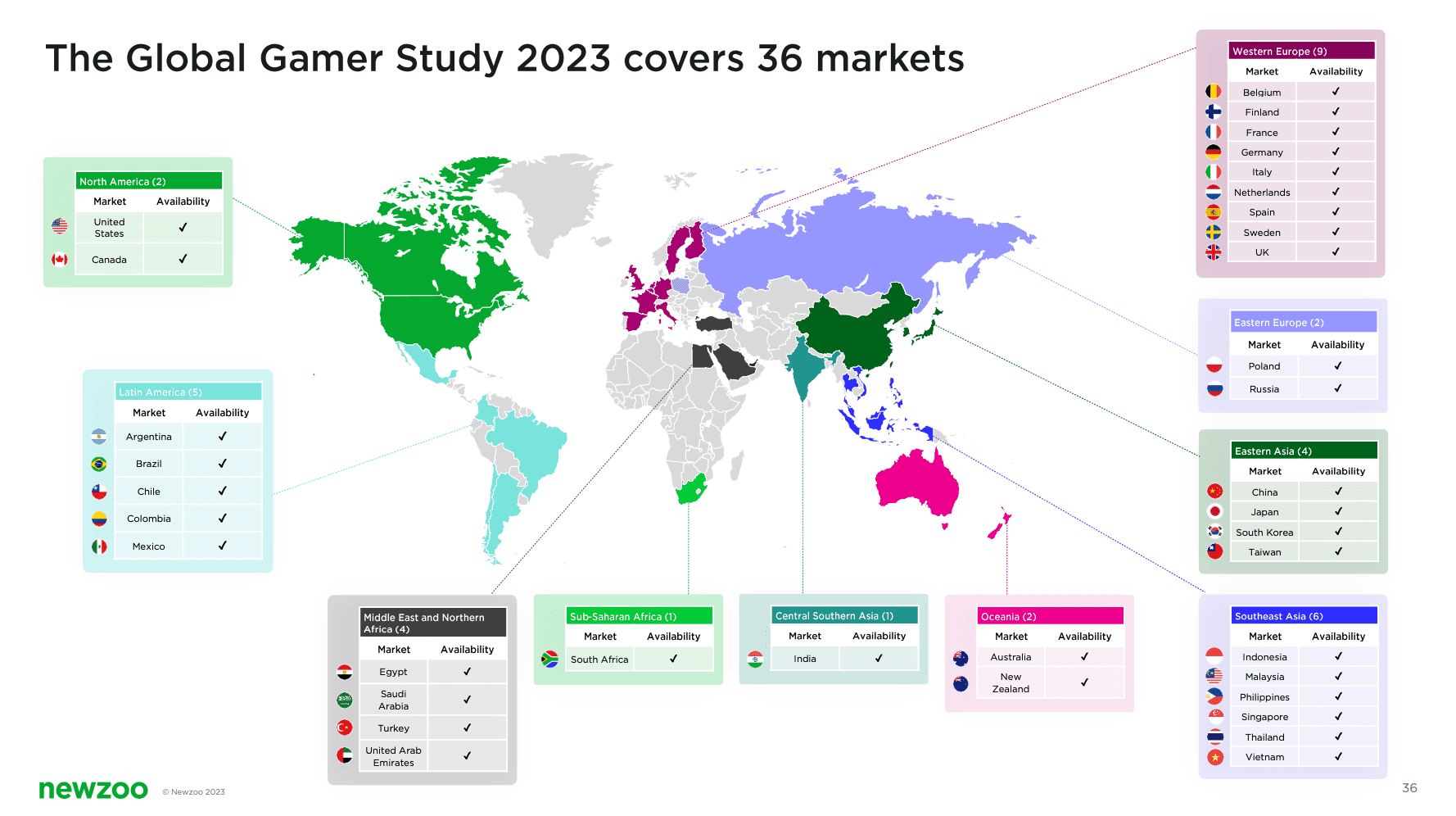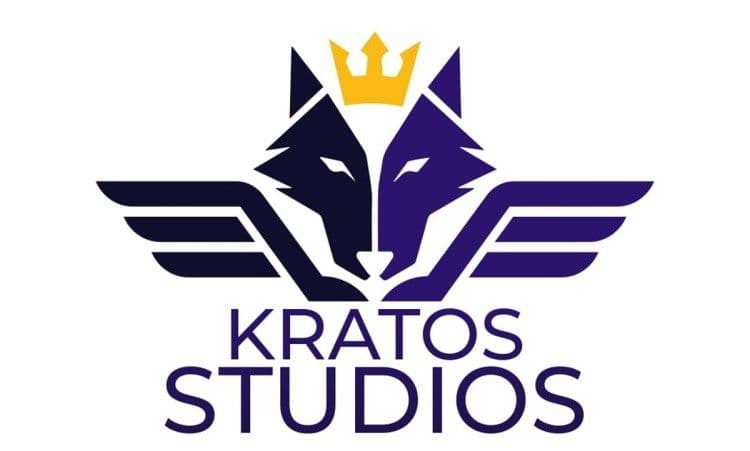In a collaborative effort, Lumikai and Google just published their State of India Gaming Report FY23. The report anticipates substantial growth in the Indian gaming industry, projecting a rise to $7.5 billion by 2028 from the current $1.1 billion valuation, excluding the Real Money Gaming (RMG) segment. In this article, we will break down the key points from the report and provide valuable insights for the web3 gaming community.

The Indian gaming sector is poised for expansion, with the total market expected to reach $3.1 billion in 2023. Mobile games constitute $1.1 billion, while RMG games dominate. However, a recent development occurred in October with the announcement of a 28% tax on deposits in RMG games, impacting the industry. In response to the tax imposition, Lumikai and Google project a restrained 5% annual growth rate for the entire gaming segment until 2028. Conversely, mobile games are expected to witness growth. Casual games are projected to increase from $0.7 billion in 2023 to $2.3 billion in 2028, with a 26% average annual growth rate. In the mid-core and hardcore categories, growth is set to rise from $0.4 billion to $2.7 billion in 2028, reflecting a 49% average annual growth rate.
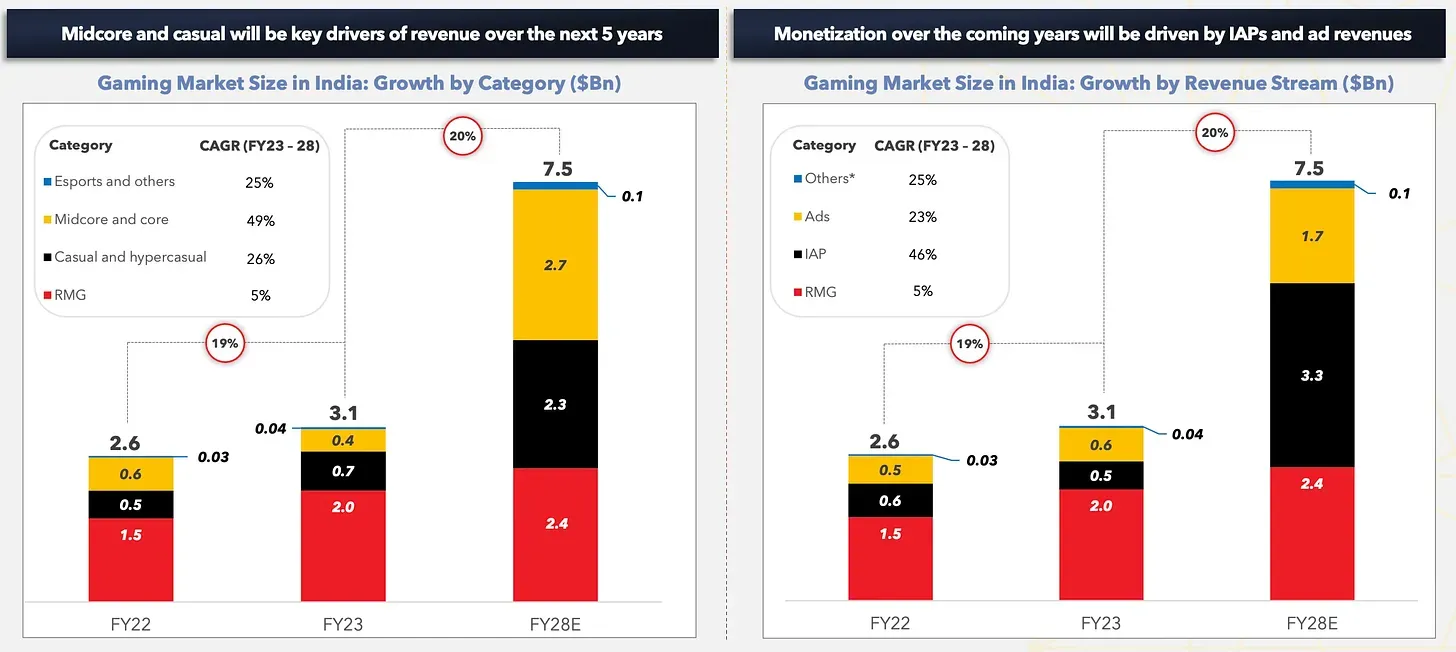
In-game payments, excluding major players like Battlegrounds Mobile India and Garena: Free Fire, saw a notable surge. In 2023, players spent $323 million on in-game purchases in other titles, marking a 37% growth compared to the previous year. The dominance of the two largest Battle Royale games in India, contributing approximately $180 million in annual revenue, underscores their role in the market.
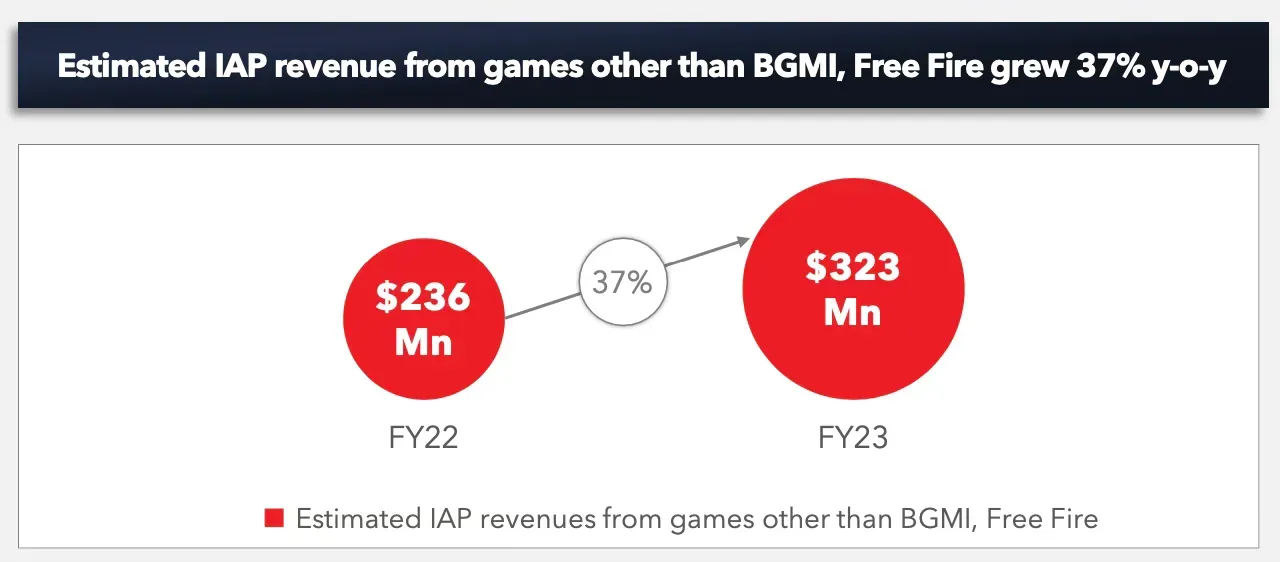
Lumikai and Google's forecast anticipates a sevenfold increase in in-game transactions and a tripling of advertising revenue within the next five years. India currently boasts 568 million players, with 140 million paying players, spending an average of 10-12 hours per week on gaming.
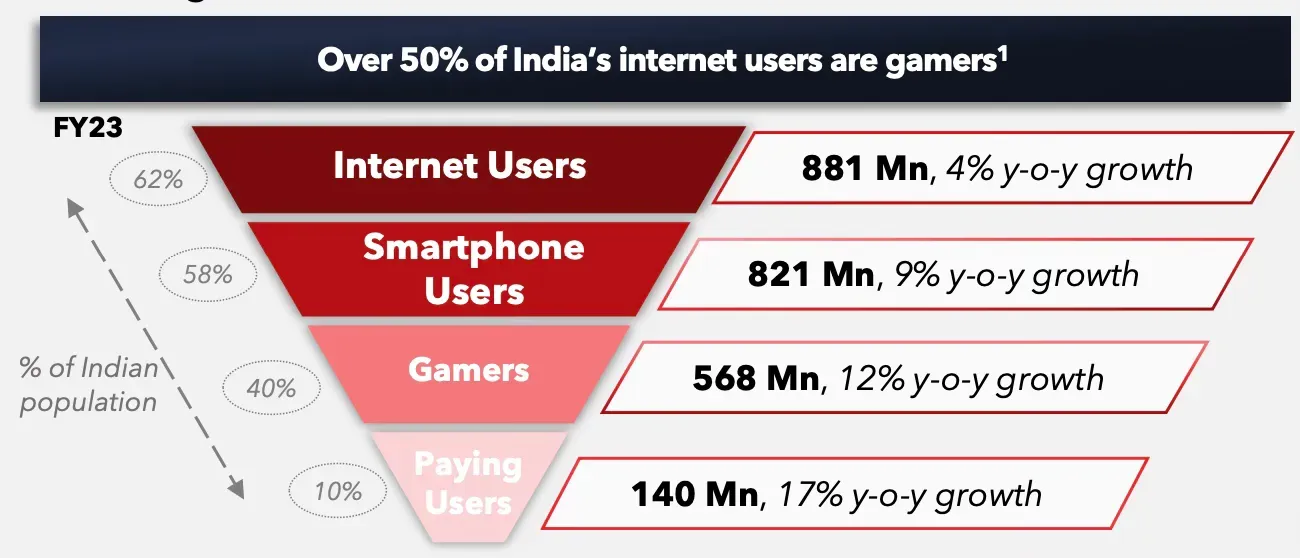
Interestingly the demographic breakdown reveals that 59% of gamers are male and 41% are female, with the majority (50%) falling within the 18 to 30 age bracket. There is an increasing number of female gamers in the region, you can read more about the growth of female gamers in Asia in a previous report we wrote. Notably, non-major cities contribute significantly, accounting for 66% of the entire gaming audience. India is the second-largest market after China in terms of mobile game downloads (15.4 billion per year), followed by the United States (4.7 billion per year), Brazil (4.7 billion per year), and Indonesia (4.4 billion per year).
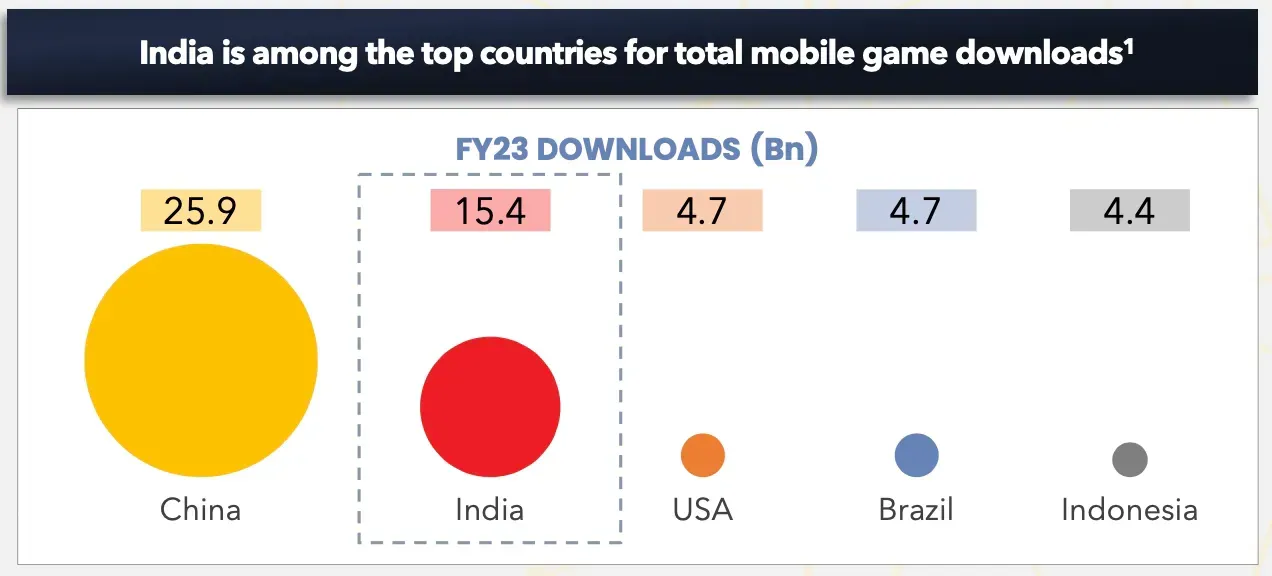
In a significant development for web3 gaming in India, Kratos Studios, the creators of the IndiGG, recently introduced the Kratos Games Network. The strategic initiative involved an investment of INR 50 crores (approximately $5-6 million) and is aimed at supporting emerging web3 gaming studios in India and other promising markets. The plan is to identify the initial group of 10 to 15 studios by March 2024. Manish Agarwal, the founder of Kratos Studios, has over 15 years of experience in the gaming industry, including his previous role as CEO of Nazara, India's first publicly listed gaming company, Agarwal brings a wealth of expertise to this ambitious venture. The announcement of the Kratos Games Network has generated substantial interest within the web3 gaming industry. The program's primary objective is to provide grants to web2 gaming development studios and assist them in transitioning to web3 gaming.

In a broader context, these findings underscore the potential of the Indian gaming industry, positioning it as a key player in the global gaming landscape. As the industry continues to evolve, the relevance of these insights extends to the realm of web3 gaming, hinting at transformative shifts and opportunities in the intersection of gaming and blockchain technologies. The future appears promising for both gamers and industry stakeholders in the Indian gaming renaissance.

